L.A. Vocelle's Blog, page 4
May 1, 2015
Cats in Film — The Cat’s Eye (1985, Stephen King)
 Stephen King’s (a well-known cat lover) 1985 comedy horror Stephen%20King's Cat's Eye" target="_blank" rel="nofollow">The Cat’s Eye is comprised of three stories: Quitters Inc., The Ledge and “General”. The only thing the three stories have in common is a travelling tabby tom cat. The first story, Quitters Inc. opens with the tabby tom trying to escape a gangling St. Bernard. The cat ends up downtown where it is beckoned to a window with a girl mannequin that asks the cat for help.
Stephen King’s (a well-known cat lover) 1985 comedy horror Stephen%20King's Cat's Eye" target="_blank" rel="nofollow">The Cat’s Eye is comprised of three stories: Quitters Inc., The Ledge and “General”. The only thing the three stories have in common is a travelling tabby tom cat. The first story, Quitters Inc. opens with the tabby tom trying to escape a gangling St. Bernard. The cat ends up downtown where it is beckoned to a window with a girl mannequin that asks the cat for help.

Stephen King's Cat's Eye" target="_blank" rel="nofollow">Cat in Quitters Inc. torture room
Right then the cat is grabbed and taken to a torture room at Quitters Inc. where it endures loud music and electrical shocks as an example of what will happen to the family members of a smoker, Dick Morrison, (James Woods), who sneaks cigarettes after quitting smoking.
The Ledge
The cat escapes Quitters Inc. and catches a ride on the Staten Island Ferry and ends up in Atlantic City, New Jersey, where he once again hears the voice of the young girl pleading for someone to help her. We see the cat trying to cross a very busy intersection and three gamblers bet on whether or not it will live to cross the road. The woman states that “all cats should be drowned” and bets that the cat will be hit by a car. Cressner, the casino owner, bets that the cat will live. Luckily, the cat scampers across the street and is scooped up by Cressner and taken home and given the name, Sebastian. Cressner finds out that the one time tennis pro Norris has been having an affair with his wife. He bets Norris that he will spare his life if he can circumnavigate the building on the outside ledge. Norris manages to survive only to find out that Cressner has killed his wife, Norris’ lover. The cat comes on the scene and knocks down Cressner’s body guard and Norris is able to turn the tables on the gangster making him now walk the ledge. Cressner was not so lucky and falls to his death owing to the insistent pecking of a pigeon. The cat once again escapes.
“General”
The travelling tom now catches a train to Wilmington, North Carolina, and finds a suburban home with an open door and runs inside. The little girl, Amanda (Drew Barrymore), begs her mother to keep the cat. The father mentions at breakfast that “cats steal children’s’ breath”, and the mother is concerned that the cat might attack their pet parakeet, Polly. The mother forbids Amanda to keep the cat inside at night, and as a consequence, General is unable to protect the girl from an evil troll that has been giving her nightmares and has been trying to suck the life out of her. The troll then sneaks into the house and kills the parakeet and successfully frames General for the death. Despite the protests of the girl that the cat had nothing to do with the demise of Polly, the mother entices the cat with a can of tuna and puts it in a box and takes it to the animal shelter where it will be killed the next day.
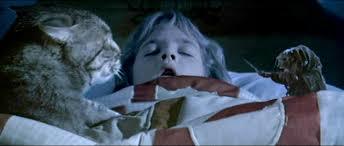
Stephen King's Cat's Eye" target="_blank" rel="nofollow">Cat battles the troll while Amanda sleeps
The troll strikes again and lucky General escapes the animal shelter to come to the little girl’s rescue before the troll is able to kill her. General kills the troll and Amanda convinces her parents that he has saved her. In the end, we see General kissing Amanda on her lips.

The post Cats in Film — The Cat’s Eye (1985, Stephen King) appeared first on THE GREAT CAT.
March 13, 2015
Cats in 20th Century History (Cats in War-Faith the Church Cat)
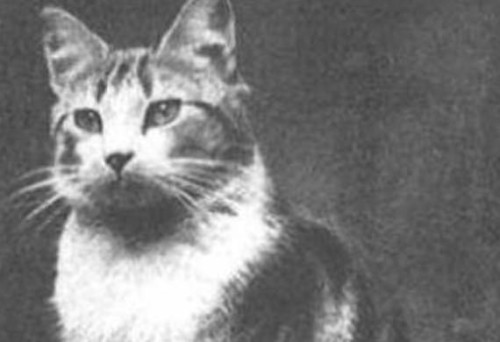
Faith
Faith the church cat was awarded a PDSA silver medal for her bravery during the London Blitz on October 12, 1945. In 1936, Faith, a stray cat, came to take up residence at St. Augustine’s church. After being turned away three times, Father Henry Ross allowed her to stay. Even though notices were posted, no one claimed her and so she remained in the church to hunt mice. Faith regularly attended Sunday services, and sat at the feet of Father Ross while he was at the pulpit. Many parishioners came to adore her. Not long after her residency in the church, Faith gave birth to a tiny black and white kitten which looked like a panda bear, and so the kitten was named Panda. In August of 1940, she inexplicably begged Father Ross to open the door to the basement where she carried her lone kitten by the scruff of its neck. Even though Ross tried to return the kitten to the upstairs several times, Faith insisted that the kitten remain in the basement. On September 9th an air raid destroyed the entire upstairs of the church, but Faith and her kitten survived in the protected basement. In honor of her bravery a picture of Faith hangs in the church today and underneath it on the Chapel wall are these words:
“Faith”
Our dear little church cat of St. Augustine and St. Faith.
The bravest cat in the world.
On Monday, September 9th, 1940, she endured horrors and perils
beyond the power of words to tell.
Shielding her kitten in a sort of recess in the house (a spot
she selected three days before the tragedy occurred), she
sat the whole frightful night of bombing and fire, guarding her
little kitten.
The roofs and masonry exploded. The whole house blazed. Four
floors fell through in front of her. Fire and water and ruin
all round her.
Yet she stayed calm and steadfast and waited for help.
We rescued her in the early morning while the place was still
burning, and
By the mercy of Almighty God, she and
her kitten were not only saved, but unhurt.
God be praised and thanked for His goodness
and mercy to our dear little pet.
The post Cats in 20th Century History (Cats in War-Faith the Church Cat) appeared first on THE GREAT CAT.
March 6, 2015
Cats in the 20th Century (Cats in War-Simon)
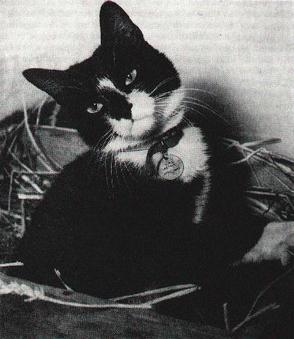
Simon Ships Out: How one stray, brave cat became a worldwide hero: Based on a true story" target="_blank" rel="nofollow">Able Seacat Simon wearing his Dickin Medal
in quarantine in the U.K.
Several cats earned awards and medals for their distinguished service during wartime. Created in 1943, the Dickin Medal, also known as the Animals Victory Cross, is awarded to animals for “conspicuous gallantry and devotion to duty” while serving in Britian’s military or civil service. The only cat to have gotten this award to date is Simon, the mascot of the British frigate HMSA Amethyst during the Yangtze Incident in 1949. A young Ordinary Seaman, George Hickinbottom rescued the malnourished cat from the docks of Hong Kong and took him aboard the HMSA Amethyst, which was soon hit by Chinese fire on the Yangtze River.Simon Ships Out: How one stray, brave cat became a worldwide hero: Based on a true story" target="_blank" rel="nofollow"> Simon was badly wounded by the blast from a Communist shell, and at least four pieces of shrapnel were removed by the ship’s medic. He seemingly recuperated and stayed at his post to kill rats throughout the ship’s 101 day ordeal. Even though 23 of the crew and the captain were killed, Simon Ships Out: How one stray, brave cat became a worldwide hero: Based on a true story" target="_blank" rel="nofollow">Simon had survived.
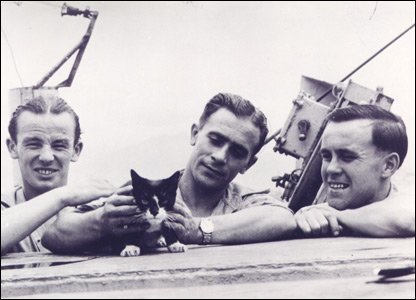
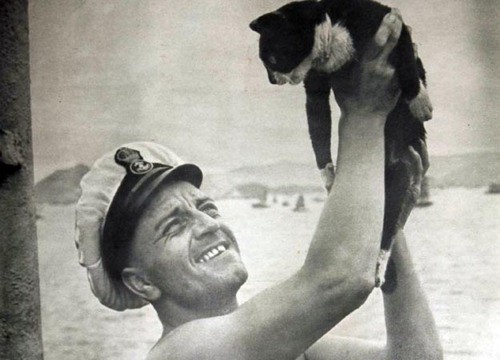
At only about a year old, he returned to Britain only to eventually die of his wounds a month later on the 28th November 1949. Hundreds attended his funeral as well as all the ship’s crew at the Ilford Animal Cemetery. His tombstone reads:
IN
MEMORY OF
“SIMON”
SERVED IN
H.M.S. AMETHYST
MAY 1948 — NOVEMBER 1949
AWARDED DICKIN MEDAL
AUGUST 1949
DIED 28TH NOVEMBER 1949.
THROUGHOUT THE YANGTZE INCIDENT
HIS BEHAVIOUR WAS OF THE HIGHEST ORDER

Able Seacat Simon’s
Grave
Photo by Acabashi
Simon’s Dickin Medal was auctioned for more than $42,000 in 1993.

Simon’s PDSA Dickin Medal. Photo courtesy of Eaton Film Company that bought it in 1993.
The post Cats in the 20th Century (Cats in War-Simon) appeared first on THE GREAT CAT.
February 27, 2015
Cats in 20th Century History (Cats in War-Unsinkable Sam)
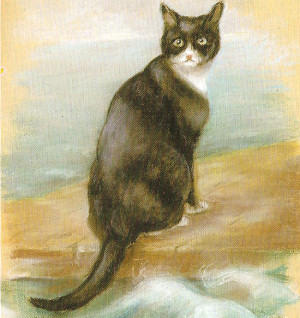
Unsinkable Sam
Georgina Shaw-Baker
UK National Maritime Museum, Greenwich
Even though some refute the story of this buoyant cat as being true, it is an amazing story of survival which most probably inspired hope in bleak wartime. The black and white cat Oscar (Oskar in German), or as he later became known, Unsinkable Sam, was ship’s mascot on the German battleship Bismarck.
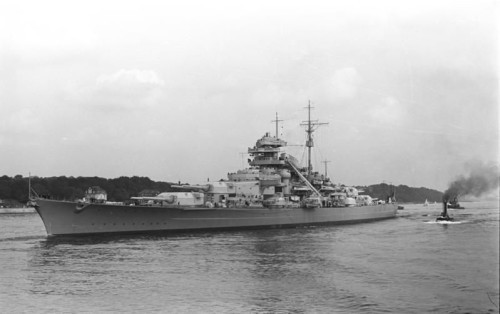
The German Battleship Bismarck
Out of a crew of 2,200, only 118 and Oscar survived the sinking on May 27th, 1941. Rescued by the HMS Cossack, Oscar again survived another sinking on October 24th when the Cossack was torpedoed and 159 of her crew were killed.
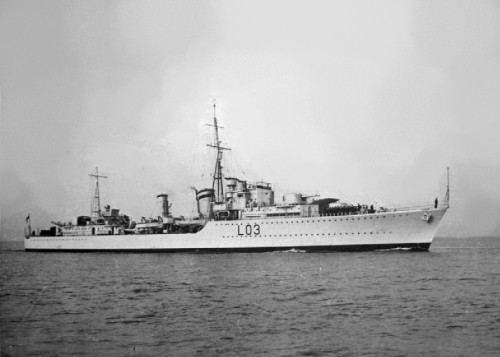
HMS Cossack
Rescued again, the lucky feline was taken to Gibraltar where he became the ship’s cat on the HMS Ark Royal that was ironically instrumental in sinking the Bismarck, but like the Cossack was torpedoed and sunk. Clinging to a floating plank, the cat now renamed Sam along with the survivors were found. Rescuers described Sam as “angry but quite unharmed”.
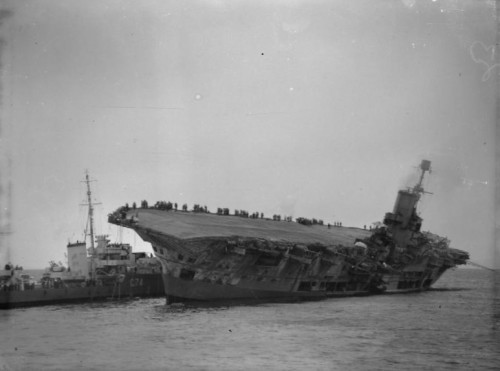
HMS Ark Royal Sinking
After having survived three ships’ sinkings, Unsinkable Sam was then transferred to a job on land hunting mice at the office buildings of the Governor General of Gibraltar. Eventually the lucky cat returned to the UK where he remained for the rest of his life at a ‘Home for Sailors’ in Belfast until his death in 1955.
The post Cats in 20th Century History (Cats in War-Unsinkable Sam) appeared first on THE GREAT CAT.
February 20, 2015
Cats in 20th Century History (Cats in War)

Plaque in memory of animals sacrificed during the First World War. Situated at the Memorial Dispensary in Kilburn, north west London.
Throughout both World War I and World War II cats in war exhibited bravery in extreme situations. Serving on battleships and in the trenches, cats proved their heroism in dire circumstances by doing what they were best at, being mousers, mascots, and affectionate companions. During WWI, the British employed more than 500,000 cats to clear the often treacherous trenches of mice and rats. Cats also alerted troops to drifting poisonous gas clouds saving thousands of lives. Both cats and dogs were even accused of spying for the Germans. When they were observed crossing back and forth across British trenches by the 36th brigade of the 12th Division in July 1915, officers believed that they might have been delivering German messages across the lines.
During WWII, cats protected valuable food stores from vermin and were considered so important that they each received an extra powdered milk ration for their service. The United States even sent thousands of American cats to France in its ‘Cats for Europe’ campaign.
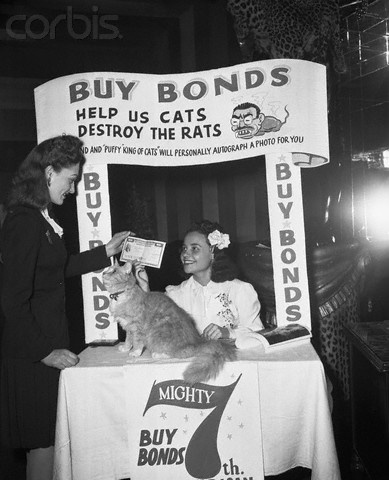
WWII Cats Kill Rats
Most pictures of cats during WWII show them as affectionate companions or mascots. Images of Felix the Cat, already so important to American history, were used as battalion and regimental emblems in WWI and WWII, and fighter pilots often drew pictures of cats on the sides of their planes. Felix type emblems were also worn as company insignia.

Felix the Cat on the side of a Boeing F4B-4, 1930’s
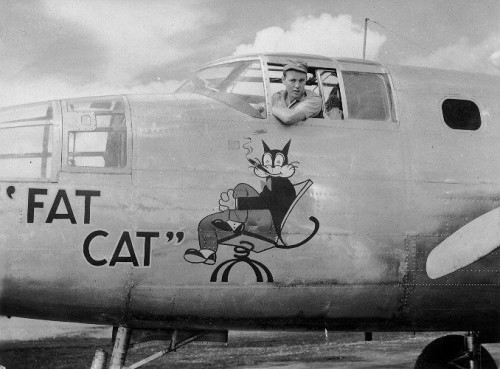
Fat Cat on side of B-25 Mitchell
September or October 1943 at Doba Dura
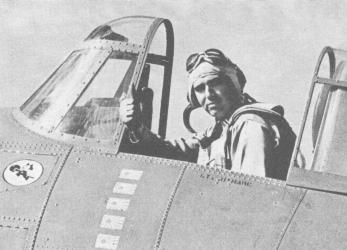
WWII LT Edward Butch O’Hare in a Grumman F4F-3 Wildcat with Felix the Cat squadron insignia
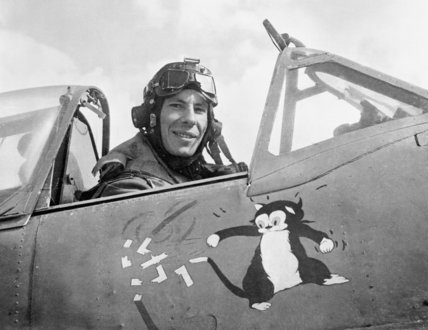
Wing Commander Ian “Widge” Gleed, leader of No. 244 Wing, in his Supermarine Spitfire Mk VB at an airfield in Tunisia, April 1943. Days later he was shot down and killed by Messerschmitt Bf 109s over Cape Bon.
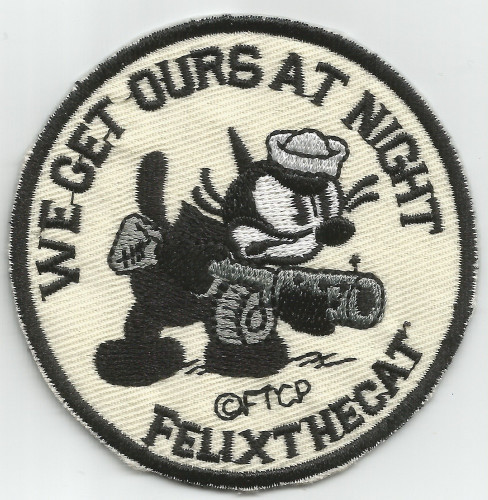
VF-3 VF-6 VF-31 MILITARY PATCH
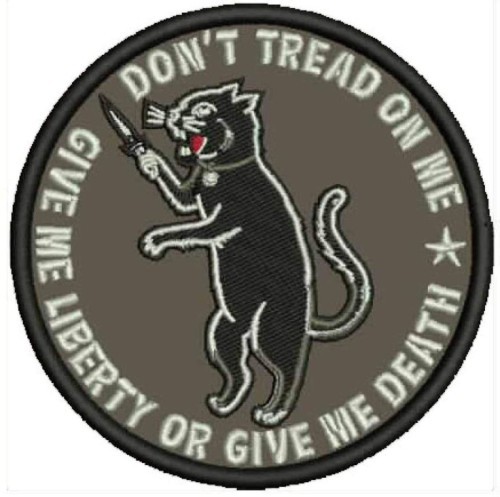
Cat Fight WWII Air Force
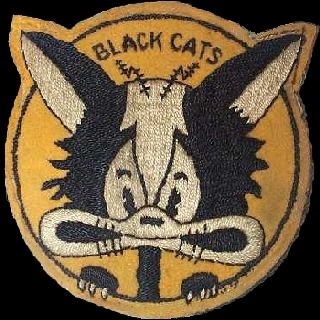
VPB-44 Black Cat squadron logo. It was designed during WWII by VP-44 pilot LT Don Black. Note the radar antennas on the top of the cat’s head. (Established as Patrol Squadron FORTY FOUR (VP-44) on 3 June 1941. Redesignated Patrol Bombing Squadron FORTY FOUR (VPB-44) on 1 October 1944.
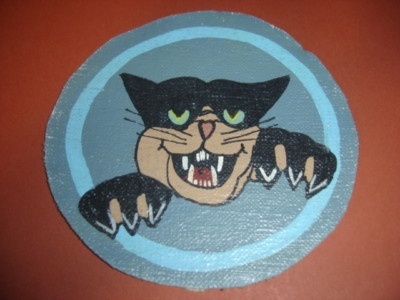
WWII USAAF Black Cat 418 Night Fighter SQDN Patch
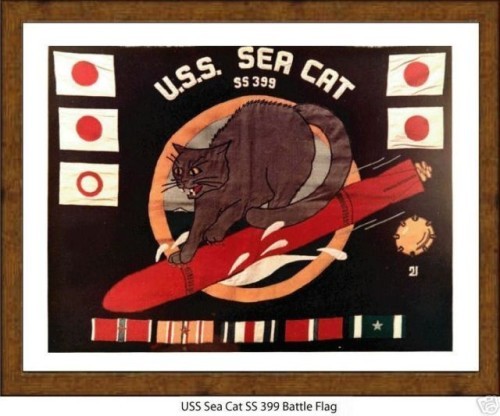
USS Sea Cat SS 399 –WWII Submarine Battle Flag, USN Navy
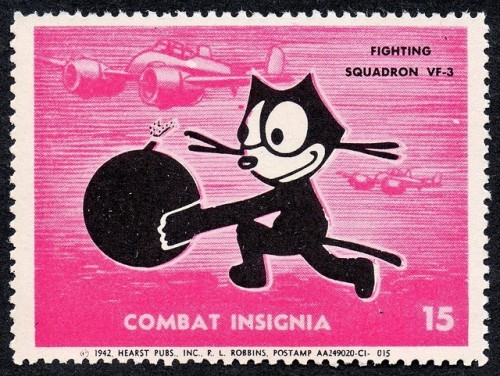
Felix-Anarchist Cat – a WWII patriotic stamp
The post Cats in 20th Century History (Cats in War) appeared first on THE GREAT CAT.
February 13, 2015
Cats in 20th Century History (Mrs. Chippy)
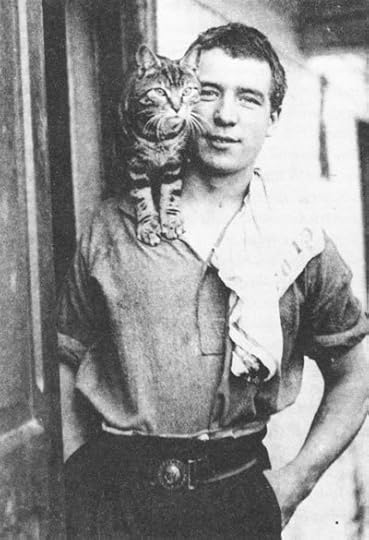
The stowaway Blackborow and Mrs. Chippy
As WWI was just beginning, an adventurous cat, Mrs. Chippy, accompanied Sir Ernest Shackleton‘s Antarctic voyage of 1914/15. Mrs. Chippy, a grey tabby tomcat, acquired his name because he constantly followed around the ship’s carpenter and master shipwright Henry (Harry) McNeish. “Chippy” is a British nickname for a carpenter, and even though the cat was male, he was called Mrs. because of his attachment to McNeish. Even so, the only photograph of Mrs. Chippy is one with him perched on the shoulder of the stowaway Blackborow who also took a liking to the cat. The ill-fated expedition ended when the Endurance became trapped in ice and was eventually crushed. It was Shackelton’s decision to shoot all the dogs and the lone cat Mrs. Chippy on October 29th, 1915 before they started out on their 350 mile trek over the ice to the nearest land in order to bring back help for the remaining men. Shackelton recorded in his diary, “This afternoon Sallie’s three youngest pups, Sue’s Sirius, and Mrs. Chippy, the carpenter’s cat, have to be shot. We could not undertake the maintenance of weaklings under the new conditions.” (Shackleton, 1919). Macklin, Crean, and the carpenter were particularly upset. The ship’s crew doted over Mrs. Chippy in his last hours giving him hugs and feeding him his favorite food, sardines, perhaps laced with a sleeping drug. McNeish never forgave Shackelton for killing his cat, and the two were on such bad terms that Shackelton refused to recommend him for the Polar Medal that the rest of the crew received. In 1925, McNeish went to live in Wellington where he died in destitution in 1930. Even though buried with full military honors in Karori cemetery, he was interred in an unmarked grave until 1959 when a headstone was finally erected. In 2004, a life sized bronze replica of Mrs. Chippy was created and now sits atop of McNeish’s grave in honor of his never ending love of his cat.
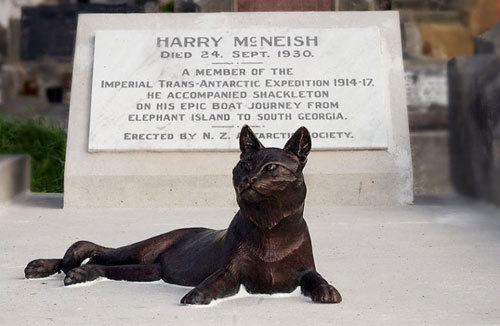
Henry McNeish’s Grave with a statue of Mrs. Chippy on top
McNeish’s grandson, Tom McNeish, 76, from Norwich, said: “If it wasn’t for him (McNeish) they would all have perished. His skills got them to safety. But all you hear about the expedition is Shackleton. I think he would be over the moon about the statue. The cat was more important to him than the Polar Medal.”(Daily Telegraph, 2004) In 1998, an Island near South Georgia was named after McNeish, and in February 2011, Mrs Chippy was featured on a postage stamp issued by South Georgia and the South Sandwich Islands.
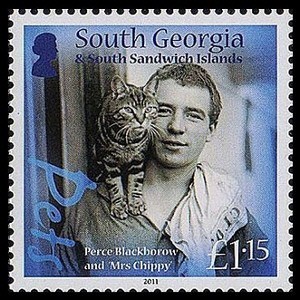
The post Cats in 20th Century History (Mrs. Chippy) appeared first on THE GREAT CAT.



